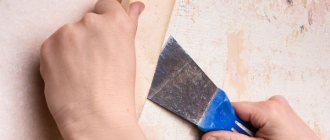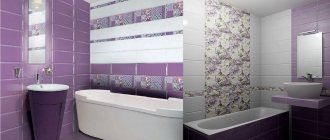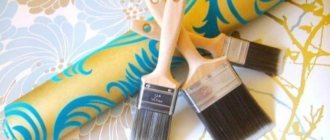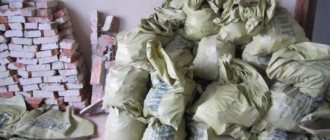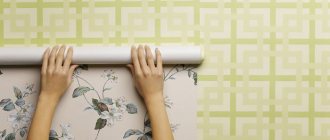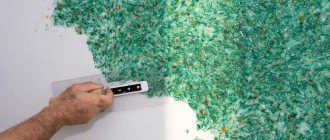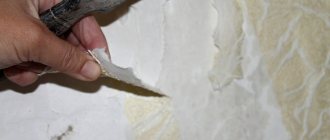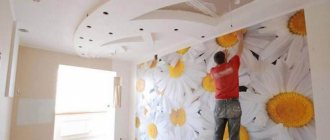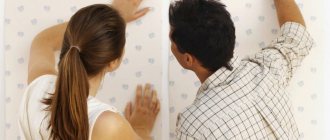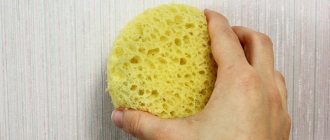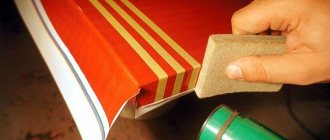In the modern world, difficulties arise more and more often in preparing the surface for wallpapering. And many people ask this question only before the withdrawal process. It turns out that this is not as simple as it seems. In this article, we have prepared 7 tips for you that will definitely be useful to you and you will cope with this task without difficulty.
Why remove old wallpaper?
Surely you know or have heard that previously wallpaper was glued directly on top of the old ones. And that was okay. It never occurred to anyone that they needed to be removed. And most importantly, the result of gluing the new wallpaper was excellent. No swelling, bubbles, or unevenness. Everything was perfect. The secret lies in the wallpaper material used. Previously they were paper. This is acceptable for them. If you are also planning to glue paper wallpaper onto the same coating, which is in good condition, close the article. You can do without removing the old coating.
And if you're planning on applying a different material or coating, keep reading. The old coating will swell or begin to react chemically with the new modern material. The result will not please you. You will lose time, nerves and money spent on materials.
When is withdrawal necessary (and when not)
Inexperienced or unscrupulous finishers may claim that it is acceptable to glue the finish over the old one. Supposedly it will fit even better and last longer. This statement did not come out of nowhere. Indeed, strips of paper need a backing and lie better on previously glued materials. Once upon a time, there were no other wallpapers except paper. Then, before gluing, they even pasted a layer of old newspapers as a backing.
Modern decor is very different. These are one-, two- and multi-layer materials on various bases: non-woven fabric, paper, fiberglass. The coverage also varies. There are many models of moisture-resistant and washable fabrics with a water-repellent top layer. Such materials cannot become the basis for further finishing. The waterproof coating will not absorb the glue, and the new finish will not stick to such a base.
In addition, the materials have different densities. Therefore, those impregnated with an adhesive composition will dry differently. As a result, creases, bubbles and folds will inevitably appear on the new decor.
You can leave the old design when it is made of paper, and the new decor is the same. But even then you need to make sure that the adhesion to the base is good and will withstand the weight of another panel. If not, dismantling is indicated.
There is another case when the stripes are not removed. Or rather, they are partially removed. It refers to multilayer coatings. When dismantling such, the upper layers are removed, the lower one is held tighter. If it is non-woven fabric, there is no need to remove it. It will strengthen the base and become a good base for decoration. In this case, the paper must be removed.
Preparing to remove old coating
Removing old coating is not the most pleasant process. Also very dirty. Therefore, it is necessary to prepare the room for such loads.
- Remove all large furniture
- Collect all remaining items in the center of the room and cover with a special protective film.
- Lay the same film material on the floor and add paper or newspapers on top to prevent slipping
- Protect the baseboard with film and masking tape
- Turn off all sources of electricity if high humidity is expected.
- At the entrance to the room, lay textiles soaked in water. This will prevent dirt from spreading between rooms.
- Prepare all necessary materials
Removing old wallpaper without tools
This method is suitable for those whose old wallpaper just begs to be picked up. Namely, they fall off in the ceiling and floor area. In order to remove them, simply pull and the entire canvas will calmly move away from the wall. In some places, difficulties may arise and it will not be possible to remove them so easily. Use a spatula or knife. If this does not help, read the following points.
Using a steam generator
Construction-type steam-generating equipment is more often used by finishing specialists, but it is quite possible to use home equivalents to facilitate the process of removing interior cladding.
You can use a steam mop, a home clothes steamer or an iron with a steam function.
The work will be carried out gradually, in order to properly soften the canvas, you will need to move slowly, processing small sections of the wall.
If after the first steam treatment it was not possible to completely remove the material, you can spray the fabric with steam as many times as necessary.
Steam treatment
It is important to remember about the wear and tear of equipment: if you steam everything with a small iron, the equipment will most likely not withstand the load.
The sole of the device may also become damaged, but this can be avoided by placing a piece of gauze folded in half between the iron and the surface of the base.
The principle of heating from moisture evaporation will work even when wet gauze is placed under a simply hot unit.
Removing old wallpaper using water
Timeless classic. Our grandmothers also knew this method. And it works. In addition, this option will have much less dust. Just don’t forget to turn off the power to the sockets; you won’t need a short circuit.
Removal process:
- Preparing the room for working with water
- Pour warm water and add a little soap or dish soap.
- Using a damp or even wet cloth, apply the “composition” to the walls.
- Wait 20-30 minutes
- Using a spatula, pry up the layers of wallpaper. Now they can be easily removed.
For an advanced level: go over the wall with a needle roller. This will allow the soapy water to penetrate deeper. The removal process will become faster and more comfortable.
Some areas will still be defended. In this case, a scraper will come in handy.
Tip: immediately put the removed wallpaper into bags. This will save you time and effort after the work is done.
This method is suitable for covering with paper wallpaper. For other materials, read on.
Is it possible to bypass this step?
Previously, several layers of wallpaper were often glued on top of each other. This saved time and effort on repairs. This possibility is due to the fact that the wallpaper was paper and was well attached in several layers. Today this should not be done, since most materials are impregnated or made of non-woven fabric, vinyl, etc.
Eliminating the stripping step increases the risk of blistering, unevenness, and premature separation of the new layer.
Removing old wallpaper using a special liquid
Suitable for those who don’t want to waste their time on the water method. There are special products that are also applied to the wall. They are inexpensive, and their effect is faster. Just don't expect a miracle. You definitely won't be able to do it in 3 minutes. This method is not much faster than the previous one.
Operating procedure:
- The purchased product is prepared for application to the wall, following the instructions on the package.
- Apply to the wall and leave for about 3 hours (everything is written in the instructions).
- After this, simply and easily remove the old coating.
It sounds nice, but in reality there are nuances. This product is not always applied in the required quantity. In this regard, after removing the wallpaper using this product, they return to the method with soapy water.
This method is suitable for all modern types of wallpaper.
Method 1
Before starting work, you need to make cuts on the trim. Then you should prepare a lot of warm water with vinegar. Moisten the surface thoroughly with a sponge and leave it for half an hour. You can use a spatula to separate large pieces of paper. All that remains is to wet it again and tear off the paper. This must be repeated until the wall is clean.
This labor-intensive method takes a lot of time.
Removing Vinyl Wallpaper
This type of wallpaper consists of PVC film, which is glued to a paper backing. Methods with water and a special liquid are suitable for removing such material.
Let's consider several nuances of such wallpapers:
- Vinyl wallpaper is moisture resistant. In order for water to penetrate into the layer we need, it is necessary to break the integrity of the coating. This is done with a needle roller, knife, or spatula. Choose any of these options.
- Vinyl wallpaper, consisting of several layers, is less easily removed. Craftsmen advise adding glue to the soap solution. The resulting composition becomes thick and lasts longer in the epicenter of the paper layer.
- Use the steaming method. If you have a steam generator or regular steamer, just turn it on and point it at the wallpaper. Under the influence of hot steam, the material can be dismantled without difficulty.
What's the easiest way to remove it?
The removal method depends on the class of washable wallpaper. The general material and base of the finishing coating affect the complexity of the process.
- Washable with moisture-resistant coating. Decorative finishing copes well with the assigned tasks: moisture does not get between the wall and the trellises, condensation, dust, fungus, and mold do not accumulate. It is difficult to remove this layer, but proper preliminary preparation will give results. It is recommended to treat the canvas with a special compound. Then remove them and sand the wall with sandpaper or a grinding stone.
- Liquid, washable glass wallpaper. Liquid wallpaper is easily removed after softening with water, but with the second category you will have to suffer. Use only special formulations that allow you to get rid of the old in a few hours. Some people who are new to the job are advised to call a professional who knows how to remove fiberglass materials.
- Double layer. Dismantling is carried out layer by layer: first the top, then the bottom. Here are some recommendations:
- the top layer can be removed using technology for moisture-resistant trellises;
- Moisten the bottom layer thoroughly; it will easily come off;
- if the base is made of fabric, then after dismantling it, treat the wall surface with a grinding wheel or any other tool.
Attention
Attention! Protect your eyes and respiratory tract when using sanding tools.
Vinyl washable coatings easily fall off the base after they are wetted with special solutions according to the instructions. Apply only with a roller, wearing gloves. If the solution gets on your hands, you should immediately wash them with laundry soap. Read about how to easily and quickly remove vinyl wallpaper from walls.
How to fuck in the kitchen?
Folk recipes versus modern technologies are an ineffective method of struggle.
Soap solutions or starch-based mixtures will not soften the adhesive base of the trellises. Grandmother's recipes have long been replaced by miracle drugs. They help save time and effort. All types of compositions come in 3 groups:
- Solutions based on acids or solvents (gasoline, acetone, turpentine). It is better not to buy them because of the dangerous evaporating vapors and the inability to moisturize the base.
- Alkalis - instantly penetrate into the structure of the canvas. After 10-15 minutes it will come off easily.
- Compositions with neutral pH and nonionic surfactants. They quickly soften the glue, destroying even a strong base.
Manufacturers offer many solutions: Methylane, Dissoucol, Axton, Tapex, Cleo Antiwall. They do an excellent job with their tasks and have only positive reviews.
Attention
Attention! Before using the drug, it is necessary to prepare the room. Remove furniture and cover the floor with plastic film. Use personal protective equipment - goggles, mask or respirator. After completing all work, ventilate the kitchen for several hours.
Removing old wallpaper glued with PVA glue
PVA does not dissolve in water. Therefore, there are difficulties in removing such a coating. Add soap or vinegar to the water and the removal process will be easier.
A sander and spatula are also used. This is a guaranteed method. Using a spatula, find elements that will remove themselves. Everything else is removed by sanding.
Difficult cases at work
What to do if you get vinyl or non-woven wallpaper
We proceed, as we described above, using the method of exposure to moisture, but before water procedures, run a sharp knife or wallpaper tiger (most importantly, something sharp) over the old wallpaper and make cuts. Water will penetrate under the vinyl film into the paper and you will not have any difficulty finishing your work on time.
What to do if old wallpaper is glued to drywall
Drywall consists (attention!) of gypsum and cardboard. For obvious reasons, the last of the components cannot be wetted with water. Therefore, in this case, it is best to either carefully use a spatula, or, as a last resort, buy a special solution for removing wallpaper.
What to do if the wallpaper is glued with PVA glue
Be strong. This is the most difficult case. Jewelry work. Water, even mixed with diamonds, will not help you. Take a sharp spatula and, forgetting about your plans for the whole evening, clean off centimeter by centimeter. Or ask your neighbors for a grinder (grinder) and buy an attachment with stiff bristles - the process will go faster.
Watch this video - the need for invention is cunning:
